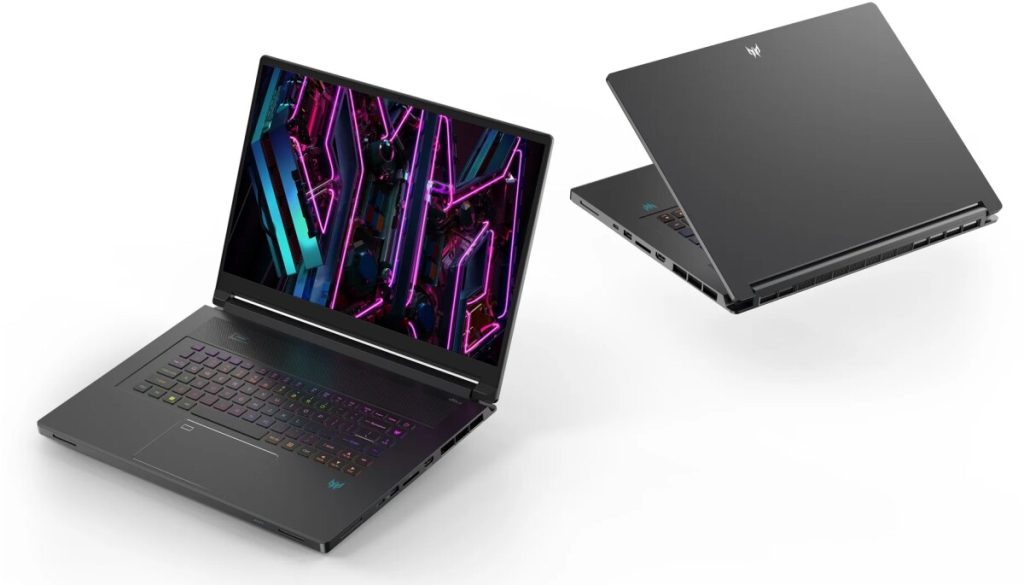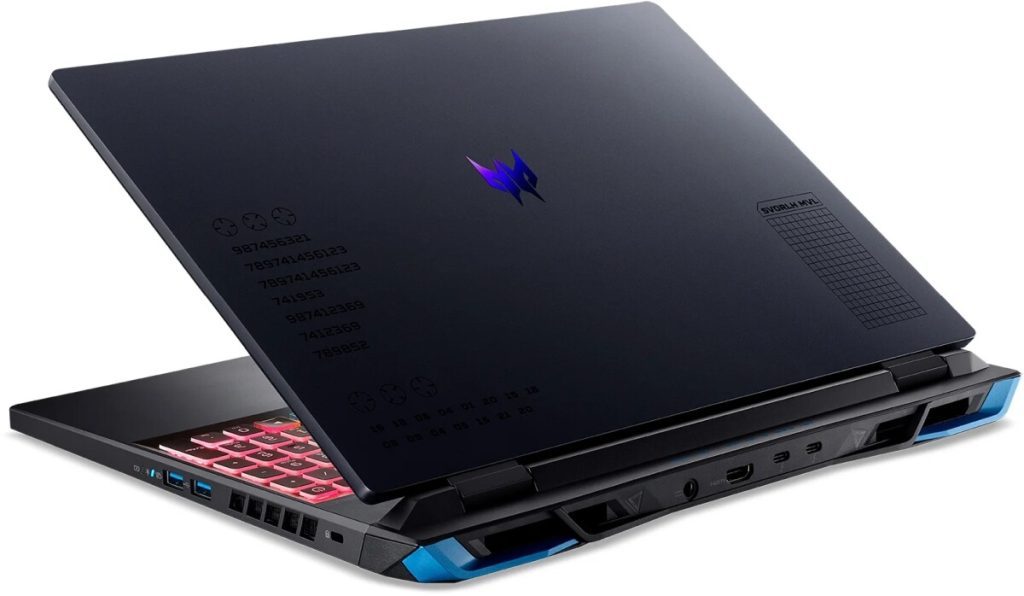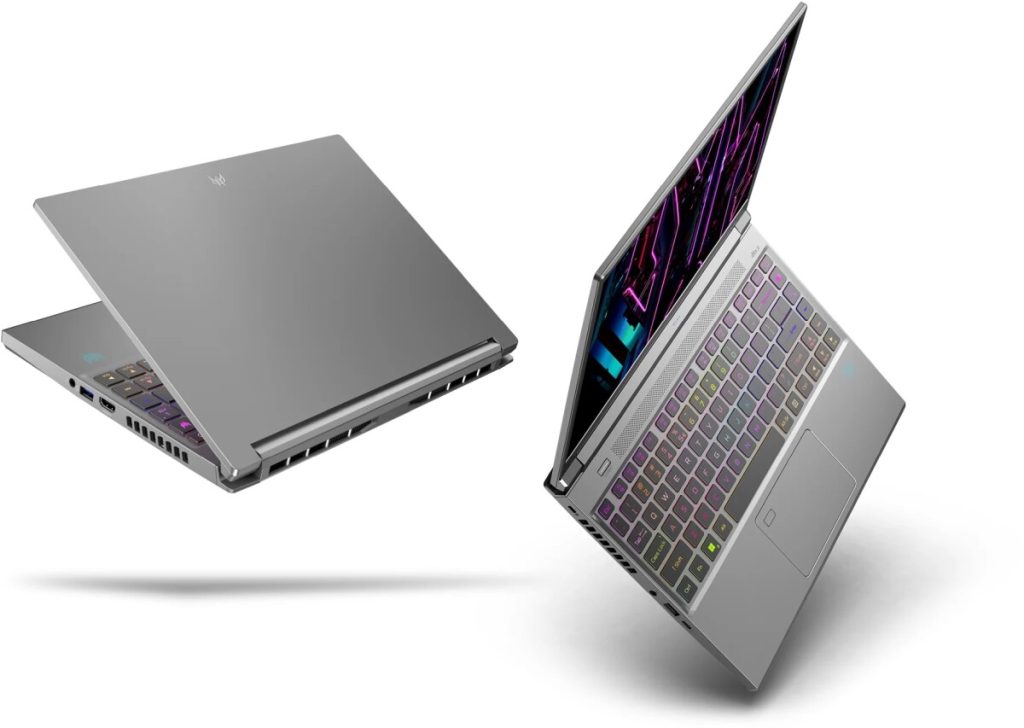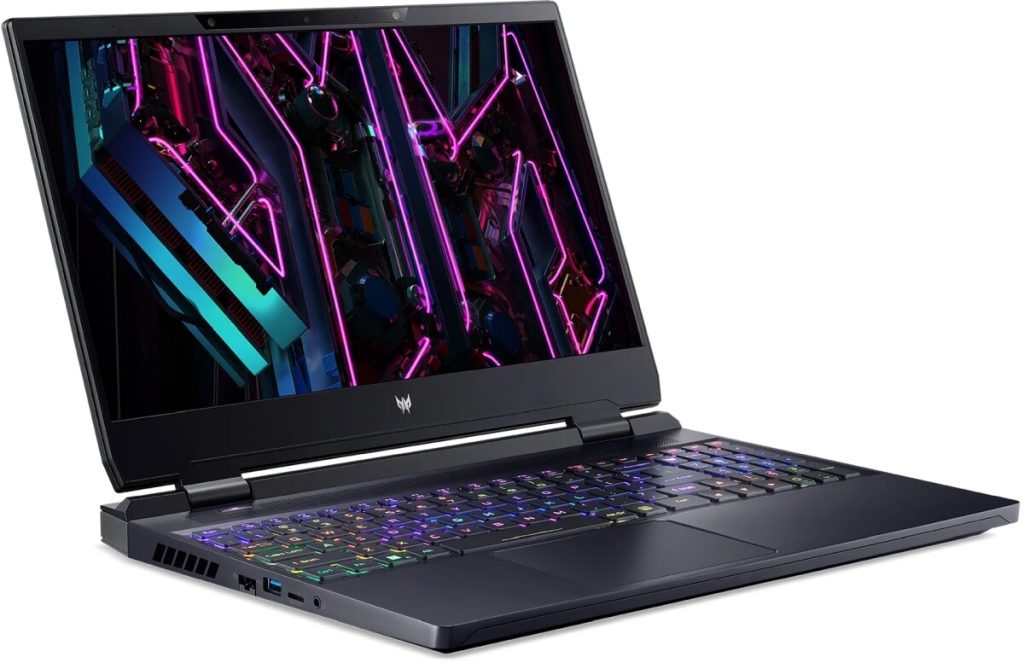Acer announced a major update to its gaming laptop lineup, refreshing with Intel 13th Gen Intel Core CPUs and Nvidia RTX 40 series laptop GPUs. The Predator Triton 17 X, Predator Helios Neo 16, Predator Triton 14, and Predator Helios 3D 15 SpatialLabs Edition are among the new releases.
The Predator Triton 17 X has a minimalist design that appeals to gamers and professionals who want a thin mobile workstation. It is less than an inch tall and has a polished, sandblasted texture on the solid metal CNC unibody chassis, a micro-etched RGB Predator logo, stainless-steel speaker mesh, diamond-cut highlights, and strategically placed vents. The laptop can be configured with up to a 13th Gen Intel Core i9-13900HX processor, NVIDIA GeForce RTX 4090 GPU, and 64GB DDR5-5600.

The Predator Triton 17 X pairs its powerful components with Acer's state-of-the-art thermal solutions using 5th Gen AeroBlade 3D fans to keep the thin gaming laptop's components cool under pressure. The laptop's 17-inch WQXGA display has a 250Hz refresh rate and uses mini-LED (AmLED) technology to boast a peak brightness of over 1,000 nits, enough to meet DisplayHDR1000 requirements, and a 1,000,000:1 high contrast ratio. These specs allow the monitor to cover up to 1000% of the DCI-P3 colour gamut.

The Predator Helios Neo 16 is another powerful laptop with a more affordable price point. It has a laser-etched encrypted code on its abyssal-black anodized cover for gamers to decipher. The computer has models with high-performance 13th Gen Intel Core HX processors paired with up to an RTX 4070 laptop GPU with a maximum graphics power of 140W. Storage options include up to 2TB PCIe NVMe SSD in RAID 0. There's also support for up to 32GB DDR5-4800 in a dual-channel configuration for the memory. The monitor comes with a 2560×1600 IPS display with a 165Hz refresh rate and 3ms response time or a 1920×1200 display with a 165Hz refresh rate that can cover up to 100% of the sRGB colour gamut.

The Predator Triton 14 is the smallest of the bunch. Designed for work or play, the sleek, understated design makes it ideal for any environment. With just 19.9 mm when close, it's easy to take with you wherever you go. Despite its reduced dimensions, it can pack up to a 13th Gen Intel Core i7-13700H Processor, an RTX 4070 or 4050 Laptop GPU, up to 32GB of LPDDR5-6000 memory and an M.2 slot for SSDs. Moreover, it has a 14-inch WQXGA miniLED display with a 250Hz refresh rate covering 100% of the DCI-P3 colour gamut.

Lastly, the Predator Helios 3D 15 SpatialLabs Edition is a game-changer. It brings glasses-free, stereoscopic 3D, giving you a whole new experience in over 70 modern and classic titles, with more to come. The laptop has a 15.6-inch 4K display with a 100% Adobe RGB colour gamut and is powered by up to a 13th Gen Intel Core i9-13900HX processor and an RTX 4080 GPU. Memory support goes up to 32GB of DDR5-5600 memory.
The Predator Triton 17 X will be available in North America in May, the UK in May/June, and in EMEA in June. Pricing starts at $3,799/£3,99/€4,499. Then, the Predator Helios Neo 16 will be available in North America, the UK and EMEA in May, starting at $1,199/£1,699/€2,199. As for the Predator Triton 14, it will launch in North America and EMEA in May, starting at $1,499/€2,399, and in the UK in May/ June at £2,199. Lastly, the Predator Helios 3D 15 SpatialLabs Edition will release in North America and EMEA in June, starting at $3,499/€3,999. This laptop will become available in the UK in May/ June, starting at £3,299.
Discuss on our Facebook page, HERE.
KitGuru says: Out of all the new Acer laptops, which one would you choose to be your portable gaming station?
 KitGuru KitGuru.net – Tech News | Hardware News | Hardware Reviews | IOS | Mobile | Gaming | Graphics Cards
KitGuru KitGuru.net – Tech News | Hardware News | Hardware Reviews | IOS | Mobile | Gaming | Graphics Cards

